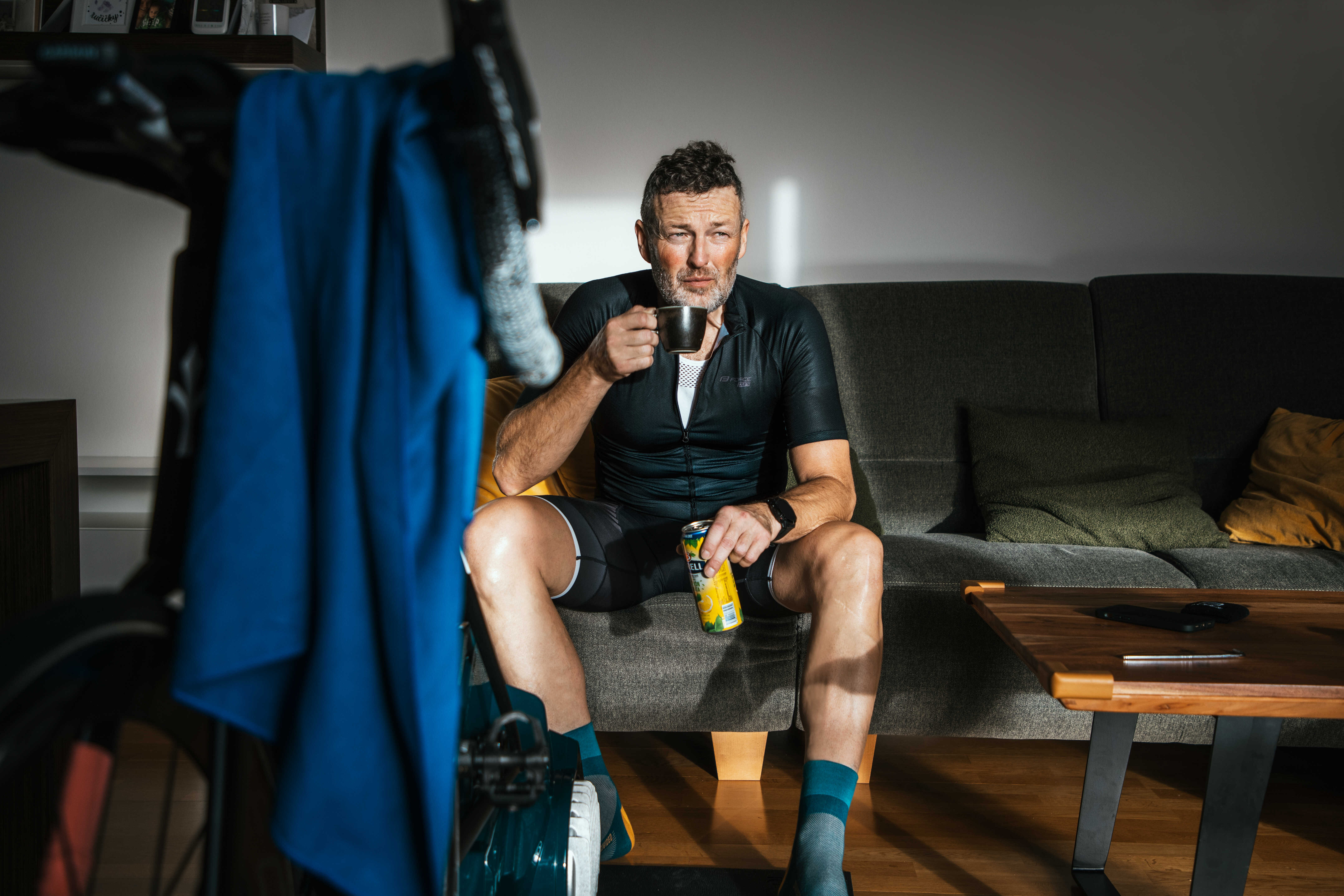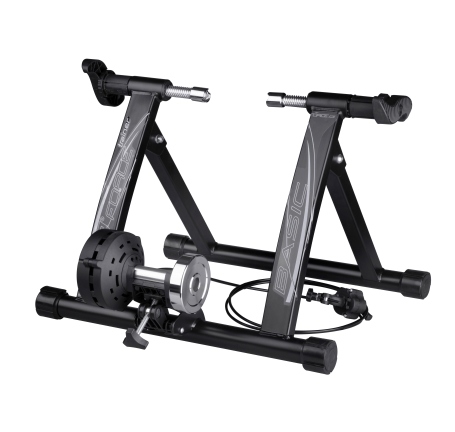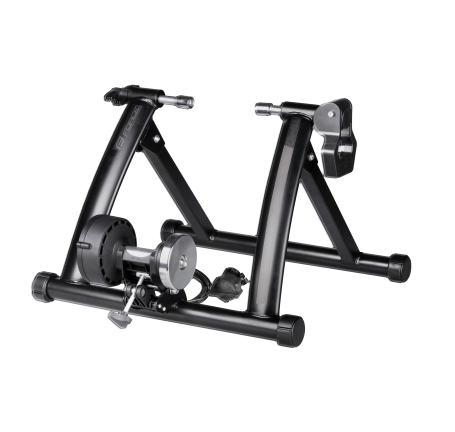Anyone who is at least a little serious about cycling won't lock their bike in the basement when the first snowflakes arrive but will start preparing for the next cycling season. Either with the goal of improving at races or with the goal of pushing themselves on their favorite routes. And we can help you with your winter preparation. We've put together some tips on equipment that might come in handy during this "dark" season.
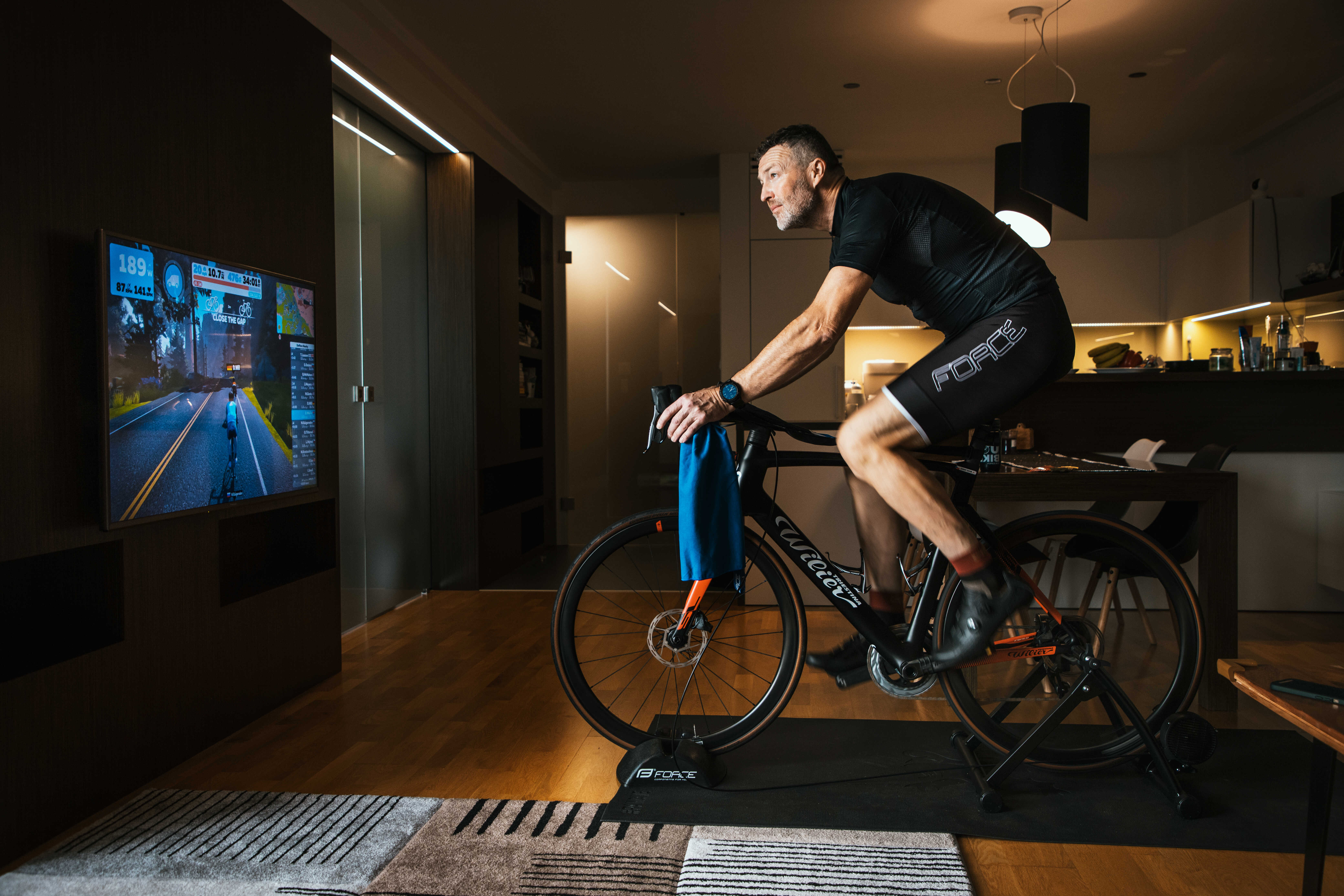
TRAINERS WITH RESISTANCE
If you are one of those cyclists who occasionally indulge in training on a trainer we recommend choosing a cheaper version - a trainer with resistance. For simple home training, this type is perfectly fine. You can adjust the resistance of the trainer yourself with the controller attached to the handlebars. However, if you want to measure watts or heart rate, you must have a bike equipped with a wattmeter (in the cranks or pedals) and a heart rate monitor in your watch or chest strap. The downside of these trainers is the higher noise level.
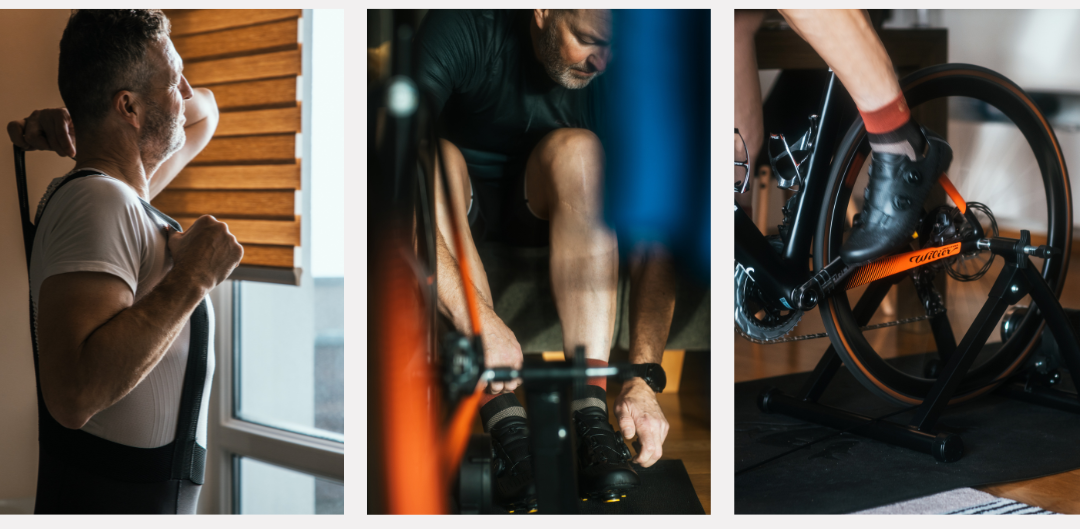
You can get two types of these basic trainers from Force, the BASIC, and the DRILL. The BASIC can only be used with a bike that has a quick-release clamp, the DRILL can be used with modern bikes that use fixed axles. The DRILL also includes a front wheel pad to keep you from going downhill.
SMART TRAINERS AND TRAINING VIA APPS
If you're serious about your training and want to know accurate data about your performance, you'll need to invest a little bit more and get a SMART trainer. In addition to the trainer, you'll also need a second cassette, as the bike is clamped into the trainer by swapping the rear wheel for the trainer. These trainers tend to have a large flywheel to give you a realistic riding feel and, most importantly, a wattmeter to monitor your performance during intervals.
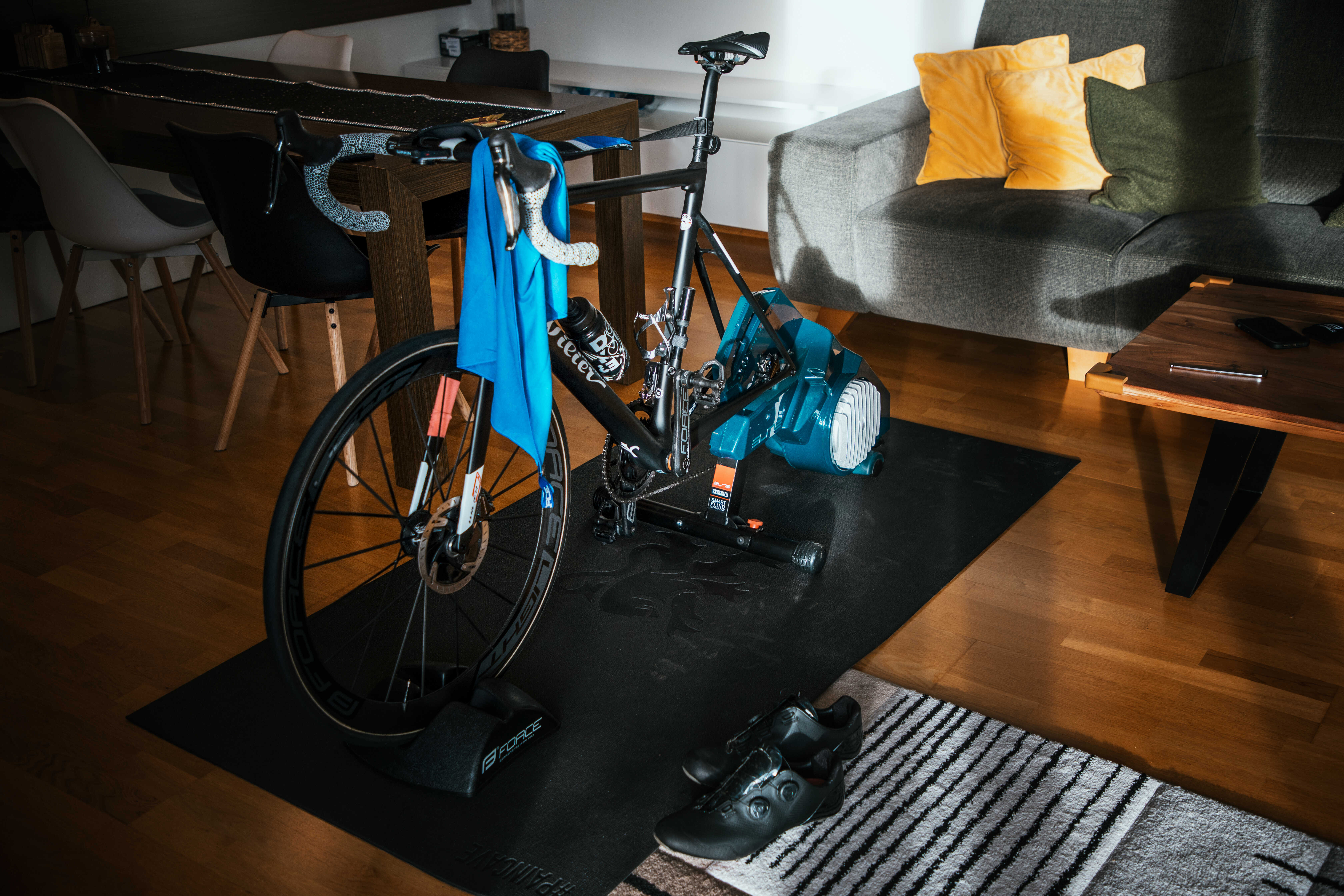
Data from the trainer is transferred to an app on your computer, tablet, or phone via Bluetooth or ANT+ protocol so you can monitor your performance in real-time and manage your training accordingly. Recently, using training apps like Zwift, Rouvy or Kinomap has become very popular. These often have set-up training plans that target different areas of training and you and your friends can race each other online in the Passo Stelvio climb, or you can compete in riding higher watts during the interval. You can also take part in virtual races via the Rouvy app and race with international cycling stars during the winter months.
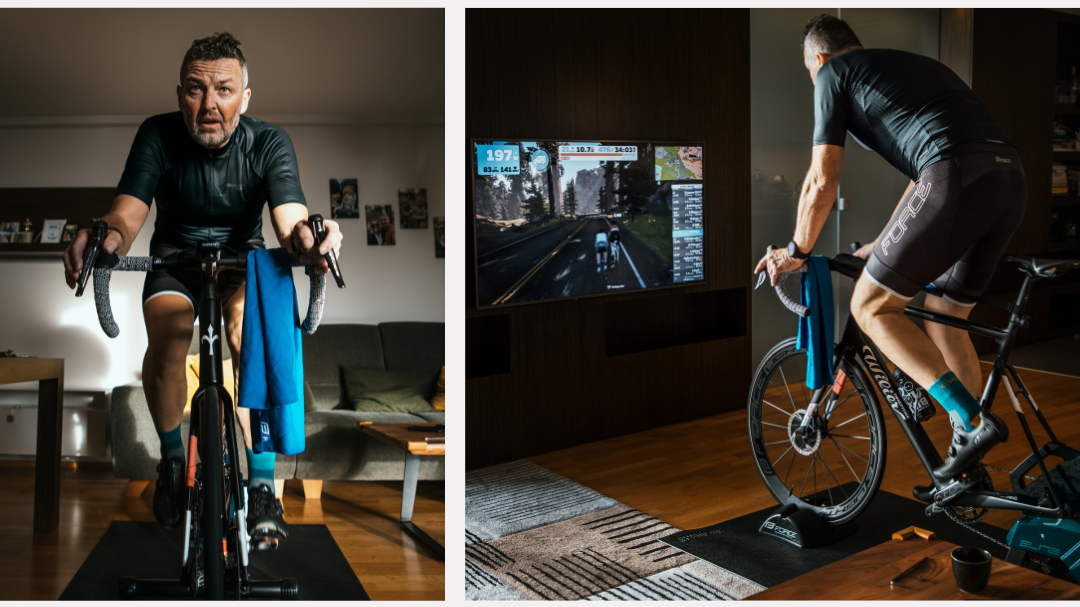
LET'S ROLL
In the past, the trainers described above were not available and the only training tool for logging miles in the warmth of your home were rollers. These aren't exactly for performance and endurance training, but with them, you can significantly improve your pedaling technique and stability.
Of course, there are also rollers where you can adjust their resistance. But these are very marginal and training on them becomes quite difficult and demanding. At FORCE we offer rollers called SPIN made of hardened plastic. This makes them very light and easy to carry. They are great for training at home as well as for warm-ups before races.
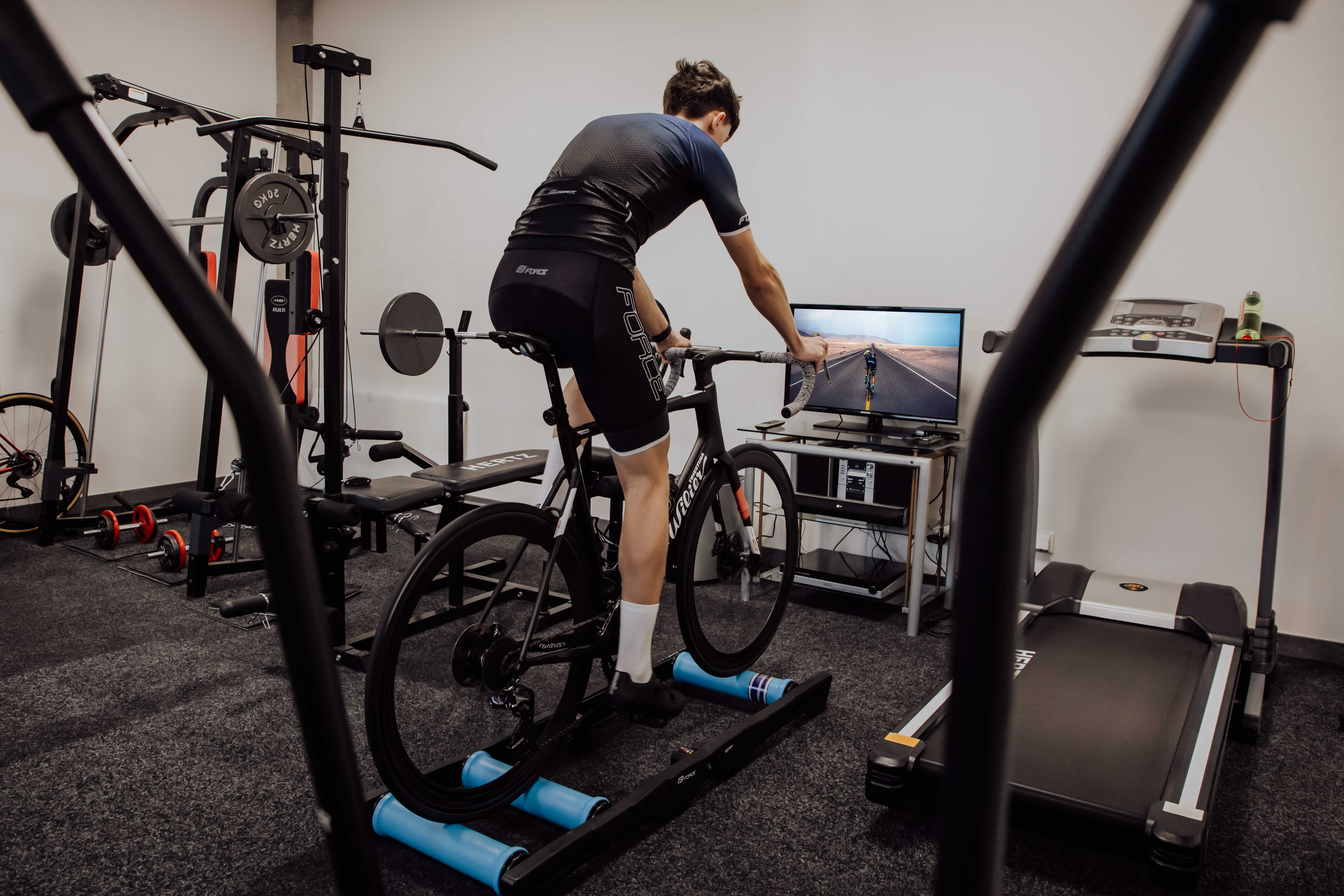
AND WHAT ARE OUR TIPS FOR RIDING THE ROLLERS?
BEGINNER'S TIP: A narrow hallway or a place where you can hold onto a wall or railing for good support and balance is ideal for learning to roll. We also recommend shifting into the hardest gear possible to get the bike into high RPMs as soon as possible and to better hold stability - the faster the bike spins, the better it stays in one place.
TIP FOR IMPROVING TECHNIQUE: It's very easy to tell on the rollers if you're pedaling technically correctly or not. If your pedaling technique is poor, you'll bounce around on the saddle of your bike and fail to develop the correct pedaling cadence.
And if you feel you have mastered rollers and find it a bit boring, try spicing it up with tricks like Rochelle Gilmore's in the video here.
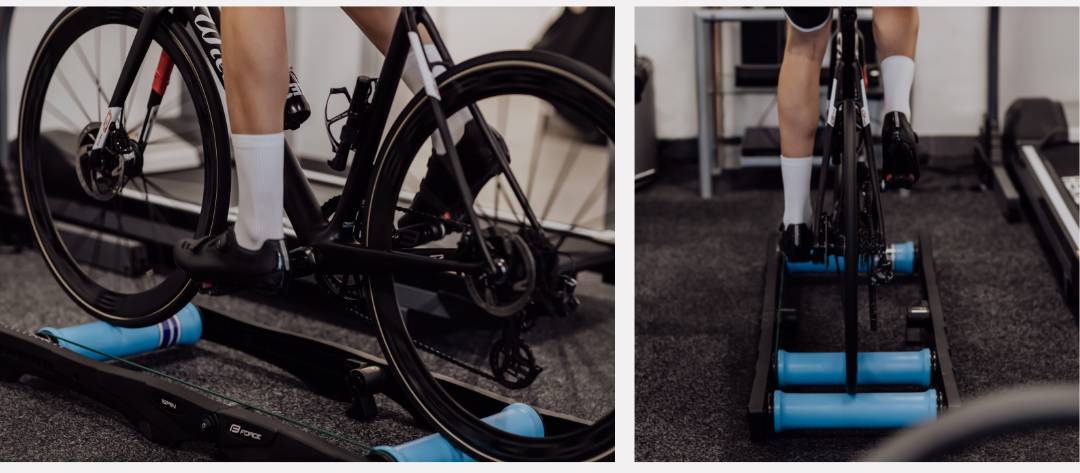
ACCESSORIES FOR RIDING THE TRAINER OR ROLLERS
You might also find a few useful accessories for riding on rollers or a trainer. The first is a handlebar sweat guard to keep sweat from dripping onto the ground, handlebars, and frame. The second great accessory is a roller and trainer mat that reduces the vibration and noise that riding on trainers produces. And it'll make the neighbors like you a little bit more.
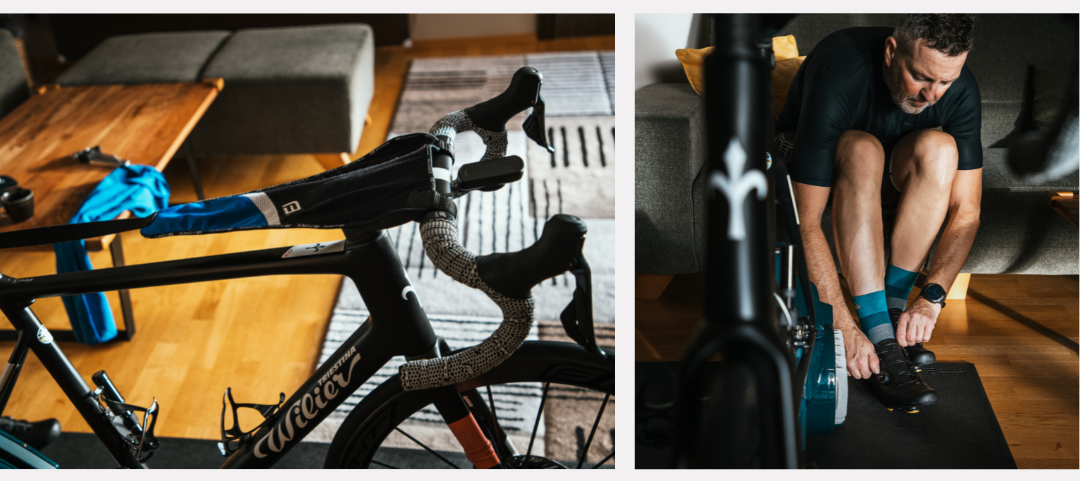
DON'T FORGET ABOUT COMPENSATORY EXERCISES
Of course, winter cycling training is not just about pedaling on the trainer and logging kilometers in the saddle. Strength training of the upper body is also important because it suffers greatly when cycling. For those of you who are MTB enthusiasts, we recommend focusing primarily on your shoulders, back, arms, and core. For this, a rowing machine or training with kettlebells and your own weight are great.
And in general, for everyone, not just cyclists, it is important to work on your internal muscles or CORE. This will prevent other health problems such as back pain, neck pain, and so on. Try plank, squats, push-ups, or lunges.
WHAT ABOUT YOU AND TRAINING OVER THE WINTER?
How are you preparing for the new season over the winter? Do you pedal at home in your living room or do you go out in the heat like the guys from the pro teams? Let us know in the messages on our Facebook profile. We'll be looking forward to it.
